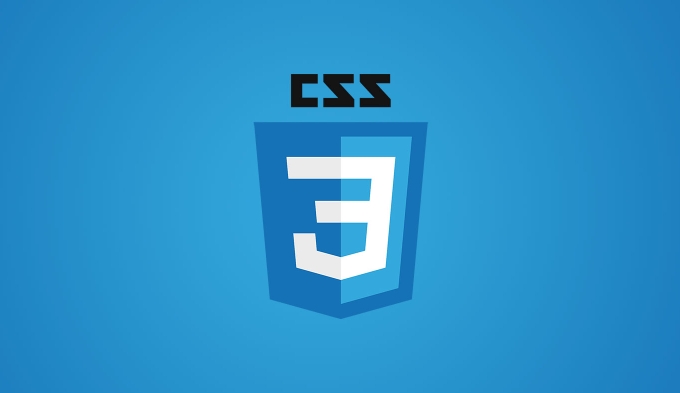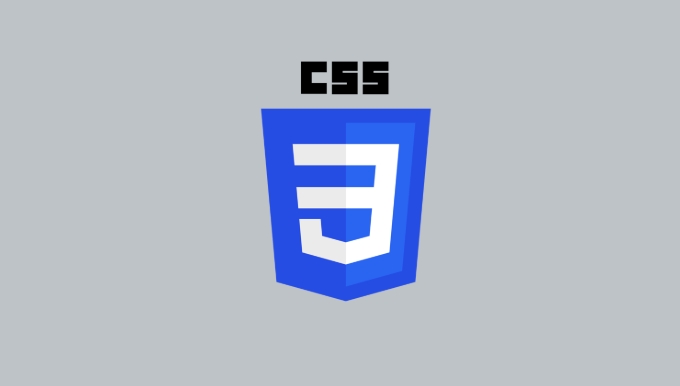The font-display property in CSS controls how custom fonts behave while loading, impacting text visibility and user experience. It prevents issues like FOIT or FOUT by dictating whether fallback fonts are used and when the custom font swaps in. The common values include auto, block, swap, fallback, and optional, each offering different trade-offs between performance and design consistency. To use it, add font-display inside the @font-face rule with a chosen value like swap or fallback. When choosing a value, prioritize swap for always-visible text, fallback for faster rendering with a preference for custom fonts, and avoid block unless intentional invisibility is acceptable. Testing is key to finding the best option for your site's performance and aesthetics.

When you're working with web fonts, especially via @font-face, the font-display property plays a key role in how and when your custom fonts appear on the page. It controls how text is rendered while the font is loading — which can make a big difference in perceived performance and user experience.

Here’s what you need to know about font-display.
What does font-display do?
The font-display property determines how a custom font behaves while it's being downloaded. Without it, browsers may hide the text until the font loads (which can cause FOIT — Flash of Invisible Text), or show a fallback font first and then swap (FOUT — Flash of Unstyled Text).

By setting font-display, you tell the browser how long to wait for the font before showing a fallback, or whether to show text immediately using a system font and swap later.
Common values of font-display
You’ll typically use one of these five values:

- auto: The browser decides the behavior — often results in a short block period followed by a swap.
- block: The text remains invisible for a short time while waiting for the font to load.
- swap: A fallback font shows immediately, and the custom font swaps in once it's ready.
- fallback: A short block period (like 100ms) and a short swap period — balances between loading speed and design consistency.
- optional: The browser might not even bother loading the font if it thinks it will delay rendering too much.
If you're aiming for a good balance between aesthetics and performance, swap or fallback are usually your best bets.
How to use it in CSS
You apply font-display inside your @font-face rule like this:
@font-face {
font-family: 'MyCustomFont';
src: url('myfont.woff2') format('woff2');
font-weight: 400;
font-style: normal;
font-display: swap; /* This is where the magic happens */
}Just pick the value that fits your needs and add it into each @font-face declaration. No extra JavaScript needed — it just works as part of standard CSS.
When to use which value?
Choosing the right value depends on your site's priorities:
- Use
swapif you want text always visible and don’t mind a brief switch from fallback to custom font. - Go with
fallbackif you want fast rendering but still prefer the custom font when possible. - Stick with
autoonly if you’re okay with the browser making the decision — but be aware it might vary across browsers. - Avoid
blockunless you have a specific reason and are okay with some invisible text during load. - Use
optionalcarefully — it's great for low-priority fonts but could result in missing fonts on slow connections.
Each has trade-offs, so test them out and see how they affect your actual page load experience.
That’s basically it. It’s not complicated, but it can have a real impact on how fast your content feels to users.
The above is the detailed content of Explain the `font-display` property. For more information, please follow other related articles on the PHP Chinese website!

Hot AI Tools

Undress AI Tool
Undress images for free

Undresser.AI Undress
AI-powered app for creating realistic nude photos

AI Clothes Remover
Online AI tool for removing clothes from photos.

Clothoff.io
AI clothes remover

Video Face Swap
Swap faces in any video effortlessly with our completely free AI face swap tool!

Hot Article

Hot Tools

Notepad++7.3.1
Easy-to-use and free code editor

SublimeText3 Chinese version
Chinese version, very easy to use

Zend Studio 13.0.1
Powerful PHP integrated development environment

Dreamweaver CS6
Visual web development tools

SublimeText3 Mac version
God-level code editing software (SublimeText3)
 How to use PHP to build social sharing functions PHP sharing interface integration practice
Jul 25, 2025 pm 08:51 PM
How to use PHP to build social sharing functions PHP sharing interface integration practice
Jul 25, 2025 pm 08:51 PM
The core method of building social sharing functions in PHP is to dynamically generate sharing links that meet the requirements of each platform. 1. First get the current page or specified URL and article information; 2. Use urlencode to encode the parameters; 3. Splice and generate sharing links according to the protocols of each platform; 4. Display links on the front end for users to click and share; 5. Dynamically generate OG tags on the page to optimize sharing content display; 6. Be sure to escape user input to prevent XSS attacks. This method does not require complex authentication, has low maintenance costs, and is suitable for most content sharing needs.
 PHP creates a blog comment system to monetize PHP comment review and anti-brush strategy
Jul 25, 2025 pm 08:27 PM
PHP creates a blog comment system to monetize PHP comment review and anti-brush strategy
Jul 25, 2025 pm 08:27 PM
1. Maximizing the commercial value of the comment system requires combining native advertising precise delivery, user paid value-added services (such as uploading pictures, top-up comments), influence incentive mechanism based on comment quality, and compliance anonymous data insight monetization; 2. The audit strategy should adopt a combination of pre-audit dynamic keyword filtering and user reporting mechanisms, supplemented by comment quality rating to achieve content hierarchical exposure; 3. Anti-brushing requires the construction of multi-layer defense: reCAPTCHAv3 sensorless verification, Honeypot honeypot field recognition robot, IP and timestamp frequency limit prevents watering, and content pattern recognition marks suspicious comments, and continuously iterate to deal with attacks.
 What are common CSS browser inconsistencies?
Jul 26, 2025 am 07:04 AM
What are common CSS browser inconsistencies?
Jul 26, 2025 am 07:04 AM
Different browsers have differences in CSS parsing, resulting in inconsistent display effects, mainly including the default style difference, box model calculation method, Flexbox and Grid layout support level, and inconsistent behavior of certain CSS attributes. 1. The default style processing is inconsistent. The solution is to use CSSReset or Normalize.css to unify the initial style; 2. The box model calculation method of the old version of IE is different. It is recommended to use box-sizing:border-box in a unified manner; 3. Flexbox and Grid perform differently in edge cases or in old versions. More tests and use Autoprefixer; 4. Some CSS attribute behaviors are inconsistent. CanIuse must be consulted and downgraded.
 How to build a PHP Nginx environment with MacOS to configure the combination of Nginx and PHP services
Jul 25, 2025 pm 08:24 PM
How to build a PHP Nginx environment with MacOS to configure the combination of Nginx and PHP services
Jul 25, 2025 pm 08:24 PM
The core role of Homebrew in the construction of Mac environment is to simplify software installation and management. 1. Homebrew automatically handles dependencies and encapsulates complex compilation and installation processes into simple commands; 2. Provides a unified software package ecosystem to ensure the standardization of software installation location and configuration; 3. Integrates service management functions, and can easily start and stop services through brewservices; 4. Convenient software upgrade and maintenance, and improves system security and functionality.
 Describe the `vertical-align` property and its typical use cases
Jul 26, 2025 am 07:35 AM
Describe the `vertical-align` property and its typical use cases
Jul 26, 2025 am 07:35 AM
Thevertical-alignpropertyinCSSalignsinlineortable-cellelementsvertically.1.Itadjustselementslikeimagesorforminputswithintextlinesusingvalueslikebaseline,middle,super,andsub.2.Intablecells,itcontrolscontentalignmentwithtop,middle,orbottomvalues,oftenu
 What is the accent-color property?
Jul 26, 2025 am 09:25 AM
What is the accent-color property?
Jul 26, 2025 am 09:25 AM
accent-color is an attribute used in CSS to customize the highlight colors of form elements such as checkboxes, radio buttons and sliders; 1. It directly changes the default color of the selected state of the form control, such as changing the blue check mark of the checkbox to red; 2. Supported elements include input boxes of type="checkbox", type="radio" and type="range"; 3. Using accent-color can avoid complex custom styles and extra DOM structures, and maintain native accessibility; 4. It is generally supported by modern browsers, and old browsers need to be downgraded; 5. Set accent-col
 How to compile SCSS to CSS?
Jul 27, 2025 am 01:58 AM
How to compile SCSS to CSS?
Jul 27, 2025 am 01:58 AM
InstallDartSassvianpmafterinstallingNode.jsusingnpminstall-gsass.2.CompileSCSStoCSSusingthecommandsassinput.scssoutput.css.3.Usesass--watchinput.scssoutput.csstoauto-compileonsave.4.Watchentirefolderswithsass--watchscss:css.5.Usepartialswith_prefixfo
 How to change text color in CSS?
Jul 27, 2025 am 04:25 AM
How to change text color in CSS?
Jul 27, 2025 am 04:25 AM
To change the text color in CSS, you need to use the color attribute; 1. Use the color attribute to set the text foreground color, supporting color names (such as red), hexadecimal codes (such as #ff0000), RGB values (such as rgb(255,0,0)), HSL values (such as hsl(0,100%,50%)), and RGBA or HSLA with transparency (such as rgba(255,0,0,0.5)); 2. You can apply colors to any element containing text, such as h1 to h6 titles, paragraph p, link a (note the color settings of different states of a:link, a:visited, a:hover, a:active), buttons, div, span, etc.; 3. Most






